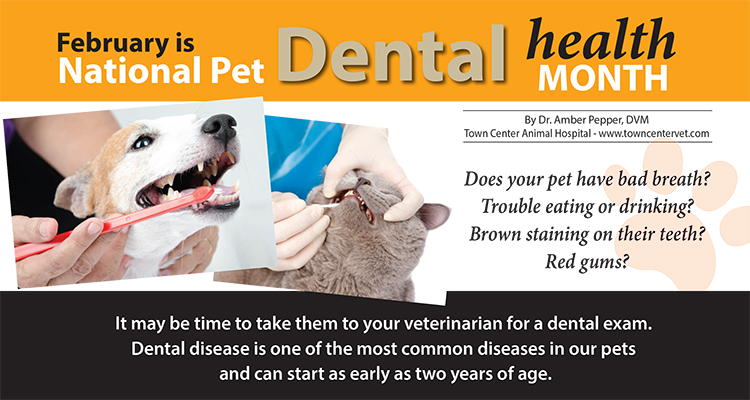
In people, tooth decay is the most common form of problems in the oral cavity but in our pets it goes much deeper than that. Inflammation and infection of the tissue surrounding the tooth is the culprit known as periodontal disease that affects our furry friends. Tartar and calculus cause plaque to build up causing inflammation at the gum line and gives bacteria a good environment to grow which can lead to infection. Eventually, if untreated, the infection can spread to the tooth socket and cause the tooth to loosen and most often pain.
Its important to practice good oral hygiene before tartar builds up in your pet and there are a number of at home products your veterinarian can recommend. However, once tartar builds up the only way to get rid of it is with a dental cleaning. The goal of the dental cleaning is to remove the tartar from the tooth as well as below the gum line. In some cases, x-rays of the teeth may need to be taken to assess the root of the tooth and how bad it is affected. X-rays are also a good way of assessing fractured teeth that may need to be removed. Your veterinarian may recommend extracting teeth that are loose, infected, broken or if there is too much root exposure causing pain. Most pets feel much better after a dental prophylaxis and can return to eating their normal diet even when several teeth have been removed.
It is important to have regular dental exams to assess your pet’s oral health. Dental prophylaxis requires general anesthesia, because unlike us, our pets won’t sit still or spit when we ask them to and your veterinarian needs a good way to keep them still and protect their airways. The sooner you address your pet’s dental disease the better. Chronic inflammation and infection can lead to other systemic illnesses especially if the infection gets into the blood stream. Before considering anesthesia it is a good idea to make sure your pet is systemically healthy with regular physical exams and blood work to make sure the kidneys, liver and other organs are functioning properly.
The best at home way to prevent tartar build up is daily brushing and starting early at a young age. Unfortunately that is not always easy and your veterinarian is here to help. If you see that your pet has evidence of tartar, gingivitis, bad breath or trouble eating you should take them to your veterinarian for an examination and the best course of treatment. It’s never too early to be concerned about your pet’s oral health and with national dental month around the corner it’s a good idea to schedule a dental exam with your veterinarian.
